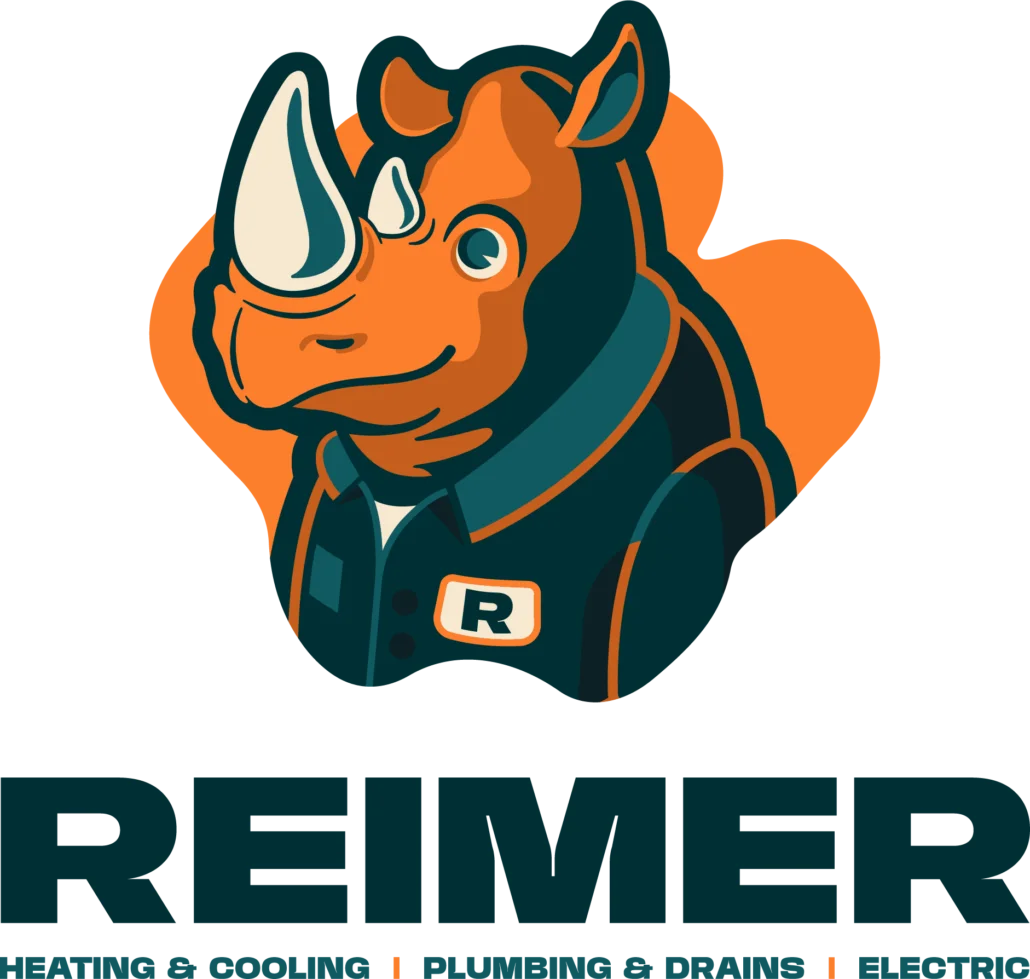During the coldest days and nights of the year, your home relies on a properly working furnace to keep your family warm and comfortable. In turn, your furnace relies on a properly working furnace heat exchanger. It’s arguably the most important part of your heating system, and any problems with it could not only lead to a breakdown, but could actually pose a safety risk to your entire family.
In this article, we’ll review the 5 most-prominent signs that something is wrong with your heat exchanger and your overall furnace. We’ll also explore just how a heat exchanger works and what can go wrong.
Reimer Home Services is Buffalo’s trusted name in heating repair services. If you suspect that your heat exchanger is damaged or that your furnace is on the verge of a breakdown, call our team for Day or Night emergency service here in Western New York. Our friendly, professional technicians are ready to help!
Experiencing Furnace Problems?
If you’re noticing any of these signs of furnace trouble—or have been experiencing efficiency or performance problems—you need to have one of our technicians out to take a look at your gas furnace. It could be on the verge of a breakdown.
What Is the furnace heat exchanger?
Every furnace contains a heat exchanger. It’s an essential part of the heating process. To create heat, your furnace combusts fuel—typically gas, but other varieties exist—in a sealed chamber. This combustion process generates heat energy from the fuel source. This is one of the things that makes gas furnaces different from electric ones, which generate heat through electric coils.
The mixture of gas and combustion fumes (known as “flue gases“) isn’t safe to breathe. That’s where the exchanger comes in.
Essentially, the exchanger is a thin metal shield standing between the combustion chamber and the blower, which distributes heated air from the furnace through air ducts into the living spaces of your home. As the combustion chamber heats the exchanger, air is blown across its surface on the other side, rapidly heating the breathable air. This air is then sent through your home’s ductwork to the living spaces of your home.
To work properly and prevent flue gases from escaping, the heat exchanger needs to be completely sealed. This is often where things start to go wrong.
What Can Go Wrong with a Heat Exchanger?
We tend to think of metal as being stable and unchanging, but heat actually has a big impact on metallic objects. As the heat exchanger rapidly heats up, the metal expands. When the furnace turns off, that heated metal cools and contracts back to the shape it held before at room temperature.
However, after doing this for a decade or more, the metal starts to become fatigued. Eventually, it’s more prone to becoming brittle, which leads to cracking, snapping, and other failures. This may lead to strange sounds you can hear coming from your furnace.
When this happens, the heat exchanger is no longer forming an effective seal between the breathable air in your and the flue air. This is a big problem: flue air is not safe for humans or pets. It can even contain carbon monoxide—a colorless, odorless gas that has a well-earned reputation as a silent killer.
How Does a Cracked Heat Exchanger Release Carbon Monoxide?
In most cases, the flue gases in your furnace will not contain carbon monoxide—it’s not a typical byproduct of gas combustion in the furnace. For carbon monoxide to leak from a cracked heat exchanger, two things need to be happening:
- The heat exchanger is cracked or otherwise has an air leak.
- There’s something wrong with how the system is combusting gas.
However, given the high-stake dangers associated with carbon monoxide inhalation, the general recommendation from the CDC is to deal with potential sources of this gas as soon as possible.
How Can Homeowners Prevent Heat Exchanger Problems?
Here are some ways homes with gas furnaces can help ensure that their heat exchanger is continuing to operate safely and effectively:
Schedule a Professional Heating Tune-Up
Have an expert HVAC technician inspect your furnace every fall to make sure the heat exchanger is still in good shape. Your technician will likely run a test using specialized equipment to see if there are any leaks in the exchanger. They’ll also visually inspect the unit to make sure there’s no obvious signs of damage or metal fatigue.
Know When You’re Due for a Replacement
A vast majority of heat exchangers last about 10-20 years. During the 15-20 year mark, homeowners should be considering whether or not they need to replace the part, and probably be talking with their HVAC technician during their annual tune-up about where things stand.
Opt for Professional Installation
It’s possible for a heat exchanger to become damaged during installation if the furnace is not installed right or carefully. This is just one of the reasons we recommend always leaving furnace installation to the professionals.
What Are the Signs of Problems with the Furnace Heat Exchanger?
Here are five signs that you need to call Reimer for furnace repair here in Buffalo:
#1. Your HVAC Technician Reports That There’s Cracks or Damage
As mentioned before, metal fatigue can lead to cracks in the heat exchanger, which in turn can cause a whole host of problems. These cracks aren’t always quite the size of the one in the Liberty Bell. These can be micro-fractures that are incredibly difficult to see, but still allow flue gas molecules to pass through the exchanger.
If your technician reports that your heat exchanger has cracked, the time for replacing it is now.
#2. There’s a Change in Flame Color
A fully functional gas furnace should generate a steady blue flame. That’s because it’s being combusted in a closed environment. Technicians will take note of an erratic burn behavior in the furnace, since that could be a sign that external oxygen is getting into the system through the cracked exchanger.
#3. There’s Soot Buildup Inside the Heat Exchanger
If the furnace has a soot buildup inside of it, then chances are that the heat exchanger is damaged. This is a sign that the burner is not burning properly and needs to be fixed. The cause can be anything from tilted burners to cracks in the heat exchange itself.
#4. There’s Discoloration and Buildup
If the heat exchanger develops cracks, the metal will get discolored with the soot that builds up on it. The cracks will allow that deposit through, making the heat exchanger appear “sooty,” as discussed in the section above. The site of the crack should have a buildup as well, or there might be spots that are darker than the rest of the metal.
#5. You Detect Carbon Monoxide
As discussed earlier, carbon monoxide can be a byproduct of the combustion process in your furnace. It’s a colorless, odorless gas that can be fatal. This is why it’s important to address furnace heat exchanger problems before they turn into a major danger to your family and house.
Every home should have a functioning carbon monoxide detector. If you suspect there’s a leak, evacuate and then call the fire department.
For even more potential signs you might need furnace repair, keep reading and check out this article.
Schedule a Furnace Inspection with Reimer
Here’s the connection between the first four items on the list above: these aren’t things you as the homeowner can spot just looking at the exterior of your furnace. You need to have a technician inspect your system on an annual basis. Or, if you’ve already had a carbon monoxide alarm go off, you need to have a technician out to inspect your system and address the problem.
Here are Reimer, we offer Day or Night emergency furnace repair in Buffalo and Western New York. Our technicians also perform fall safety and tune-up services. Contact us for service by calling (716) 272-2371 or contact us online.
Remember: dealing with your furnace heat exchanger sooner than later can both prevent a furnace breakdown and keep your family safe.


